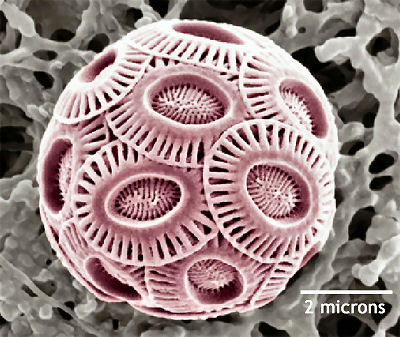Given our recent discussions of waves, and now of tides - the longest wave of all, I thought the video below was appropriate. It shows rather well what the higher states on the Beaufort Scale can do even to a large ship.
I hope they had some Dramamine on board!
ScienceDaily (Feb. 9, 2012) — As oceans warm due to climate change, water layers will mix less and affect the microbes and plankton that pump carbon out of the atmosphere -- but researchers say it's still unclear whether these processes will further increase global warming or decrease it.
See Also:
The forces at work are enormous and the stakes huge, said Oregon State University scientists in an article published February 10 in the journalScience. But inadequate ocean monitoring and lack of agreement on how to assess microbial diversity has made it difficult to reach a consensus on what the future may hold, they said.
"We're just beginning to understand microbial diversity in the oceans and what that may mean to the environment," said Stephen Giovannoni, an OSU professor of microbiology. "However, a large portion of the carbon emitted from human activities ends up in the oceans, which with both their mass of water and biological processes act as a huge buffer against climate change. These are extremely important issues."
The interest is growing, scientists say, because nearly half of the world's photosynthesis is contributed by microbial plankton, and the process of marine carbon production and consumption is much faster than on land. A turnover of terrestrial plant biomass takes 15 years, they say, while marine turnover takes just six days.
As the ocean surface warms, evidence shows that it will become more "stratified," or confined to layers that mix less than they did in the past. This should reduce overall ocean productivity, Giovannoni said, but so little is known about the effect on ocean microbes that the implication for carbon sequestration and global warming is less clear.
Some OSU research on routine seasonal changes of microbes in the Sargasso Sea of the Atlantic Ocean suggests that different and specialized microbial communities can become more dominant when water warms.
As warmer oceans become a more long-term and global phenomenon, researchers need to know more about these microbes, and whether their behavior will amplify or reduce atmospheric carbon and the greenhouse effect.
It could be either, Giovannoni said.
"Some warming of surface waters may reduce carbon sequestration, which could cause a feedback loop to increase global warming," Giovannoni said.
"Other forces, what we call the microbial carbon pump, could cause carbon to sink into the deep ocean and be segregated from the atmosphere for thousands of years," he said. "We know both of these processes exist, but which one will become dominant is unpredictable, because we know so little about ocean microbes."
It was only two decades ago that OSU scientists discovered SAR11, an ocean microbe and the smallest free-living cell known, but one that's now understood to dominate life in the oceans, thrives where most other cells would die and plays a huge role in carbon cycling on Earth.
Microbial action also surprised scientists just recently, Giovannoni noted, when specific microbe populations surged following the Gulf Coast oil spill and cleaned up much of the oil faster than many thought possible. And some plans to "fertilize" the ocean and sequester atmospheric carbon through marine phytoplankton growth have been put on hold, he said, because it just isn't certain what would happen.
To reduce that uncertainty, Giovannoni advocates more aggressive development and implementation of marine microbial monitoring technology around the world, to add to what scientists can already learn from study of satellite images. And the field is so new, he said, that many researchers are not even comparing the same types of data or standardizing the tools they use to assess microbial diversity -- a problem that needs to be addressed.
Dramatic advances in DNA sequencing in recent years, Giovannoni said, should also help researchers unravel the ocean microbe mystery.
Recommend this story on Facebook, Twitter,
and Google +1:
and Google +1:
Other bookmarking and sharing tools:
Story Source:
The above story is reprinted from materials provided byOregon State University.Note: Materials may be edited for content and length. For further information, please contact the source cited above.
Journal Reference:
- Stephen J. Giovannoni, Kevin L. Vergin. Seasonality in Ocean Microbial Communities. Science, 2012; 335 (6069): 671-676 DOI: 10.1126/science.1198078
Note: If no author is given, the source is cited instead.
Disclaimer: Views expressed in this article do not necessarily reflect those of ScienceDaily or its staff.
 Check out this short fascinating article and associated pictures of one shark (a tasseled wobbegong) eating another shark.
Check out this short fascinating article and associated pictures of one shark (a tasseled wobbegong) eating another shark. Despite that some people think bacteria and algae are thoroughly unimportant and boring, they play one of the largest roles in the world ocean. If climate is shifting, then that shift could influence the formation of the pycnocline, either in favor of or against. That would have profound implications on marine food webs. Here's the article from ScienceDaily.com.
Despite that some people think bacteria and algae are thoroughly unimportant and boring, they play one of the largest roles in the world ocean. If climate is shifting, then that shift could influence the formation of the pycnocline, either in favor of or against. That would have profound implications on marine food webs. Here's the article from ScienceDaily.com.

